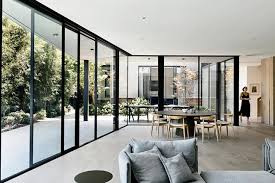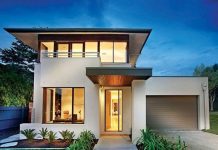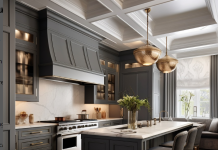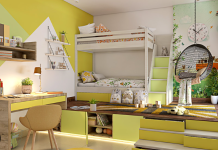Most people think it’s about what we build, but how we build it is more important. Building a sustainable home does not mean sacrificing style or comfort. On the contrary, your home can be picture-perfect and you will not impact the environment.
With today’s frequent innovations and continuous technological advancements, it’s easier than ever to incorporate sustainable materials into your home. Whether you’re renovating your house or redecorating, there are plenty of home design trends that can freshen up the overall look of your home while benefiting the environment at the same time.
If you’re into a sustainable way of life, aim for a harmonious and functional balance in your home. Many architects and designers keep up with the latest trends and make sure to be as modern as possible when it comes to home design ideas.
Take a look at some extraordinary sustainable home design trends.
Table of Contents
1. Sustainable Construction Methods
Let’s start from the beginning. If you’re thinking about adding a garden shed, a pool house or completely renovating your house, you should opt for sustainable construction methods over the traditional ones. If you’re one of those people who consider sustainability to be one of the critical elements in building, opt for a system-built home.
If you haven’t heard of system-built homes before, here’s what you should know. All components are manufactured in a climate-controlled site and transported to the construction site where they are assembled.
Should you select this option, not only will your home be constructed in no time, but it will also waste less materials, be energy-efficient, and reduce the overall environmental impact. It’s the perfect two-in-one package for anyone thinking about complete renovation.
2. Healthy Materials
Anyone opting for a sustainable home should think not only about the outdoor construction but the materials that go inside, too. Be mindful of the materials used, especially where they’re sourced, their labor origin, what they are made from, etc. If you can, choose locally sourced materials to support local businesses and reduce emissions from transport.
You can create something original by choosing recycled, salvaged, and reclaimed materials. By doing this, you’ll make a unique and distinctive living space while reducing construction waste at the same time.
3. Design With Sustainability in Mind
There are tons of sustainable materials and design tools you could choose in the process of renovating and decorating. Some of the most widely used materials include natural and renewable materials like bamboo, cork, and FSC-certified wood. It would be smart to start from the base — incorporate engineered bamboo flooring and work your way to the top with more high-quality sustainable elements.
Also, if you can, choose glass. This is a perfect choice if you want to bring indoor and outdoor areas together. Sliding glass doors, large windows, giant single-pane windows, and other glass solutions that will let natural light in and make the space look larger. Of course, make sure that you opt for specialized glass that won’t reduce your home’s energy efficiency.
There are now more eco-friendly design products on the market than ever. It’s much easier to achieve a luxurious and stylish home aesthetic without having to sacrifice the look and feel you want to accomplish. Think about the long-term effects and important lifestyle changes rather than current trends and your home will turn out to be a fascinating mix of style and sustainability.
4. Green Roofs and Living Walls
If you’re thinking in terms of sustainability, you must be aware of the benefits of incorporating plants into your home. When you live in a house, you have endless options to add greenery to your home — consider a roof garden, your backyard, front yard, etc.
If you live in an apartment with roof access, you can also make it thrive with a water-retaining layer and living vegetation. It’s your choice whether you will plant grass, flowers, veggies, or something else.
However, if you don’t have access to outside space, you can incorporate plants into your living room, bedroom, etc. Living walls or green wall systems are perfect for purifying and humidifying the air, reducing volatile organic compounds, and providing an overall healthier living environment.
Studies have shown that people surrounded by greenery lead happier and healthier lives, both physically and mentally. You’ll feel relaxed, more content, and creative since you won’t be inhaling toxins but purified air.








